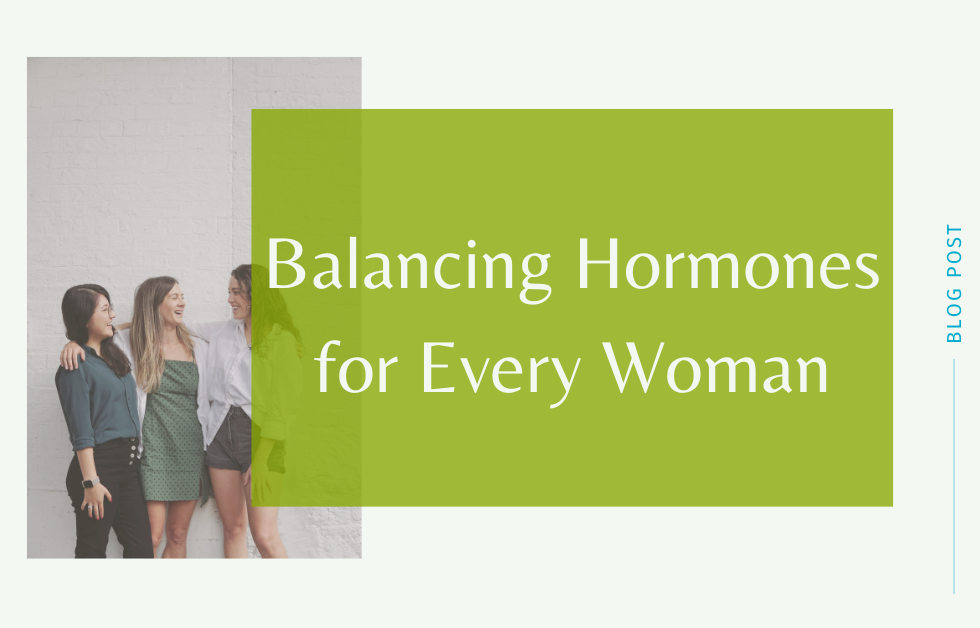PMS and menopause are a challenge for every woman at some point. While symptoms of PMS or menopause can be difficult to manage, understanding the many factors that are at play give you the tools to cope. As a naturopathic doctor, I use natural methods to help balance hormones.
Cholesterol and Hormones
Cholesterol is often high during peri-menopause and menopause to compensate for the decreasing levels of other hormones in the body, such as estrogen. Cholesterol is needed to make both sex and adrenal hormones. Hormones are the messengers of the endocrine system, and cholesterol is key to transporting hormones to the correct receptor sites on the cells. If you have low cholesterol, your body isn’t able to transport hormones efficiently, and if you have high cholesterol you may not have enough hormones getting into your cells. Low hormonal levels caused by cholesterol imbalance can result in symptoms such as fatigue, brain fog, hot flashes, and low sex drive.
Underactive/Overactive Thyroid in Women
An underactive thyroid can effect women of all ages and can exaggerate the symptoms of menopause or PMS. A thyroid imbalance can lead to menstrual bleeding changes, hot flashes & night sweats, infertility, hair loss, and weight gain. Symptoms of overactive thyroids are menstrual disturbances, heart palpitations, heat intolerance and fatigue.
Thyroid related PMS symptoms may include:
- Early or late puberty, severe cramps, irregular periods
- Scant or heavy flow
- Bleeding between menstrual
- Infertility
- Cold body temperature,
- Depression & fatigue
Thyroid related menopause symptoms may include:
- Fatigue
- Insomnia
- Dry hair and skin
- Anxiety
- Hot flashes
Cortisol and Menopause
Elevated cortisol may increase the severity of night sweats, hot flashes and irritability during menopause. At the time of menopause, the adrenal glands should produce sufficient estrogen and progesterone to avoid unpleasant menopausal symptoms. However, in many women the adrenal glands are depleted due to prolonged stress or vitamin deficiencies. Therefore when the ovaries stop producing hormones, the adrenals do not produce enough to make up the difference and symptoms may occur such as vaginal dryness, insomnia, hot flashes, mood swings, and low libido.
PMS
High estrogen, low progesterone levels, high/low cortisol, or thyroid imbalance may increase the severity of PMS symptoms. Symptoms such as heavy periods, insomnia, headaches during menstruation, and mood swings can be increased due to hormonal imbalances.
Low cortisol may make periods heavier. Heavy period caused by low cortisol almost stop on the 4th day, but might start up again on the 5th or 6th day agin.
PMS Type A: the most common type of PMS. It is caused by high estrogen and low progesterone. Symptoms include irritability, anger and mood swings.
PMS Type D: a less common type of PMS and is caused by low estrogen and high progesterone. Symptoms include depression, confusion and sadness.
PMS Type H: caused when the adrenal glands overproduce aldosterone, which causes fluid retention. Symptoms include weight gain of more than three pounds and breast swelling and tenderness.
Steps you can take to balance hormones:
- Incorporate protein, complex carbs and good fats into your meals and snacks.
- Include 6-8 servings of a wide variety of vegetables in your meals, especially those that are bright in color.
- Consume 25 grams or more of fiber daily
- Go lightly on fruits and avoid high glycemic fruits such as bananas, figs, raisins, dates, oranges and grapefruits.
- To stabilize blood sugar throughout the day, eat breakfast before 10am, lunch before Noon, a snack between 2-3pm, with dinner between 5-6pm.
- Manage stress: yoga, meditation, do something that gives you joy
- Sleep 8 hours a night
It’s always a good idea to have your hormones checked as well as your micronutrient status.

